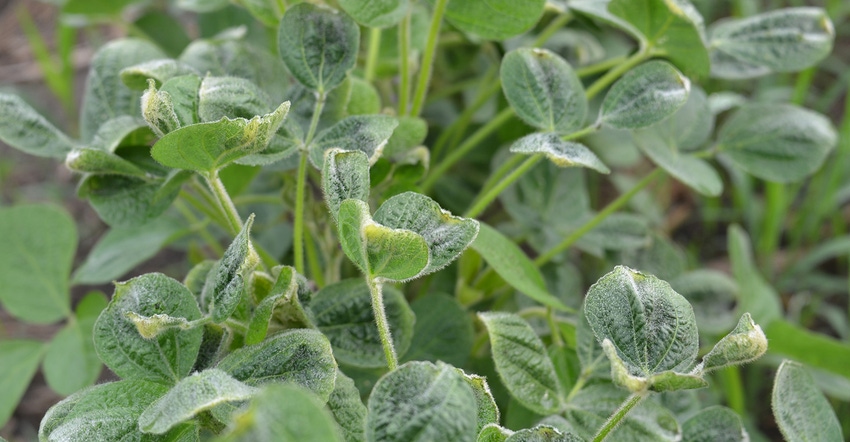
Now that the EPA announced its decision to extend registration for dicamba for two years for over-the-top field applications on dicamba-resistant soybeans, state agriculture officials and state soybean leaders will meet to discuss how it will be used in Minnesota in 2019.
“We are awaiting more information from EPA, including the new label, and to engage the Minnesota Soybean Growers Drift Taskforce once their members have completed harvest,” says Allen Sommerfeld, senior communications officer with the Minnesota Department of Agriculture. “We want to ensure our examination is done in a timely manner so that farmers can make their planting decisions.”
EPA’s Oct. 31 announcement included the following label changes for the 2019-20 growing seasons:
• Only certified applicators may apply dicamba over the top. Those working under the supervision of a certified applicator may no longer make applications.
• Over-the-top application of dicamba on soybeans 45 days after planting is prohibited.
• Over-the-top applications on soybeans remain at two applications.
• Applications will be allowed only from one hour after sunrise to two hours before sunset.
• In counties where endangered species may exist, the downwind buffer will remain at 110 feet. There will be a new 57-foot buffer around the other sides of the field. The 110-foot downwind buffer applies to all applications and not only in counties where endangered species may exist.
• There will be enhanced tank cleanout instructions for the entire system.
• An enhanced label will improve applicator awareness on the impact of low pH’s on the potential volatility of dicamba.
• Label cleanup and consistency will improve compliance and enforceability.
Training periods for 2019 and beyond will be clarified, ensuring consistency across all three dicamba products.
EPA’s registration of those products was set to expire accordingly: Nov. 9 for XtendiMax and FeXapan, and Dec. 20 for Engenia. Registration for all three will automatically expire Dec. 20, 2020, unless EPA further extends it.
In Minnesota, however, product registrations are conducted on an annual basis, Sommerfeld says. Any potential Minnesota-specific restrictions would be for the 2019 growing season only.
In a recent online edition of Minneline, the Minnesota Soybean Growers Association said its members were encouraged by the EPA announcement. Bob Worth, a Lake Benton, Minn., soybean grower, MSGA director and chairman of the soybean growers’ drift task force, noted that farmers will continue to be good stewards of dicamba.
The task force convened for the first time last year in response to dicamba damage reports. Members worked with state officials, university researchers and the industry to develop best management practices for dicamba use on dicamba-tolerant soybeans.
See the EPA decision on dicamba webpage for more information
About the Author(s)
You May Also Like






